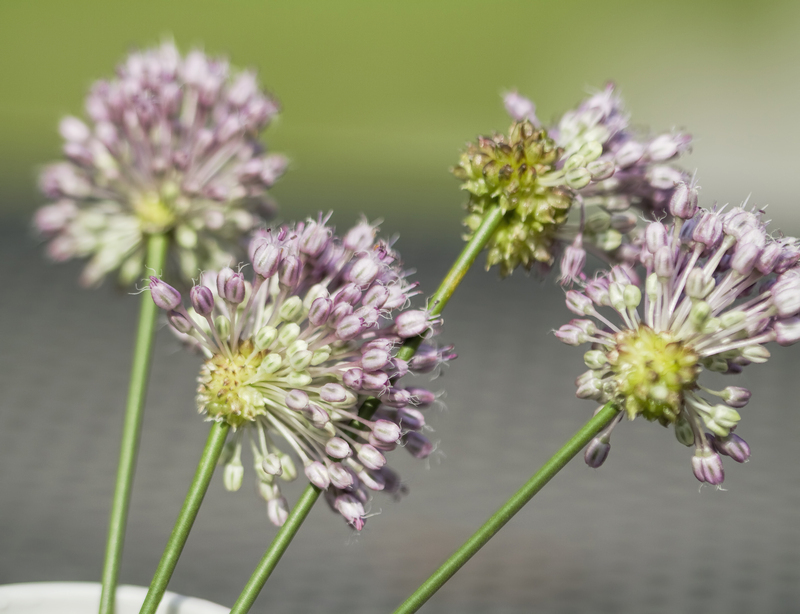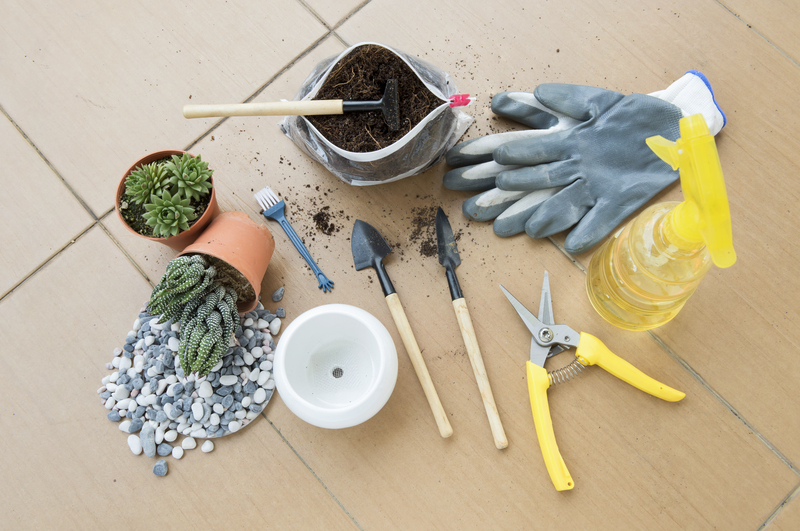The Ultimate Orchid Care Handbook
Posted on 11/09/2025
The Ultimate Orchid Care Handbook
Unlock the secrets to stunning, thriving orchids with this complete orchid care guide. Whether you're a beginner or a seasoned collector, this handbook covers every essential aspect of orchid cultivation from watering techniques to pest management, ensuring your plants flourish for years to come.
Understanding Orchids: An Introduction
Orchids are among the most beloved and fascinating flowers worldwide, admired for their unique beauty, exotic blooms, and air of sophistication. Orchid care can seem both mysterious and challenging, but with the right knowledge, anyone can nurture these delicate treasures successfully. In this ultimate orchid care handbook, we unravel the essentials and provide hands-on tips for every step of orchid growth and maintenance.
The Popularity and Allure of Orchids
- Extensive Diversity: With over 25,000 naturally occurring species and more than 100,000 hybrids, orchids present an incredible variety of shapes, colors, and sizes.
- Longevity: Well-cared-for orchids can bloom year after year, rewarding your effort with consistent beauty.
- Symbolism: In many cultures, orchids symbolize love, luxury, strength, and beauty.

Choosing the Right Orchid
Picking the best orchid species for your home or garden is the first step toward successful orchid cultivation. Here are some beginner-friendly orchids:
- Phalaenopsis (Moth Orchid): Known for long-lasting blooms and easy care, ideal for beginners.
- Cattleya: Famous for their large, fragrant flowers. Require slightly brighter light conditions.
- Dendrobium: Adaptable and comes in various colors, perfect for both indoor and outdoor growth.
- Oncidium: Recognizable by their "dancing lady" appearance, these orchids thrive in bright, filtered light.
Factors to Consider
- Available Light
- Humidity & Temperature
- Blooming Frequency
- Potting Space
Optimal Growing Conditions
Every orchid species has its preferred environment, but most cultivated orchids appreciate similar conditions. Understanding these basics is fundamental to effective orchid care:
1. Light for Orchids
Orchid plants require substantial, indirect sunlight to thrive. Insufficient or excessive light can lead to poor flowering or burnt leaves.
- Phalaenopsis: Prefers low to moderate, indirect light. Ideal for east or north-facing windows.
- Cattleya/Dendrobium: Enjoys bright, filtered light. South or west-facing exposure is ideal (with sheer curtains).
Tip: Leaves should be a vibrant, medium green. Dark green often signals too little light; yellowish-green or red-tinged leaves may mean too much sun.
2. Temperature & Humidity
- Daytime: 65?F to 80?F (18?C to 27?C) is optimal for most orchids.
- Nighttime: 55?F to 65?F (13?C to 18?C).
- Humidity: 40%-70%. Use room humidifiers, pebble trays, or frequent misting for dry environments.
3. Air Circulation
Good airflow reduces pest and disease risks. Gently moving air (a ceiling fan or open window) keeps orchid roots healthy.
Comprehensive Watering Guide
Proper watering is critical to orchid health but often misunderstood. Overwatering is the most common cause of orchid issues, such as root rot.
The Golden Rules of Watering
- Check Before Watering: Insert your finger or a bamboo skewer into the potting media. If it's still damp, wait another day.
- Use Room-Temperature Water: Cold water can shock the roots, while hot water may scald them.
- Avoid Watering the Crown: Always water around the edges of the pot to prevent rot at the plant's center.
- Frequency: Typically, once a week for most orchids. Adjust depending on temperature, humidity, and potting mix.
Signs of Overwatering: Wilting leaves, mushy roots, yellowing foliage.
Signs of Underwatering: Wrinkled leaves, desiccated roots, slow growth.
The Best Water for Orchids
- Rainwater is ideal due to its purity.
- Distilled or Reverse Osmosis Water is also gentle and mineral-free.
- Avoid softened or saline water, which can damage sensitive orchid roots.
Potting and Repotting Orchids
Orchids need to be grown in the right medium and repotted every 1-2 years. Their aerial roots and sensitivity to waterlogged soil necessitate special attention.
Orchid Potting Media
- Bark Mix: Most popular, allows good airflow and drainage.
- Sphagnum Moss: Retains more moisture but may lead to root rot if overused.
- Coconut Husk, Perlite, or Lava Rock: Often mixed with bark for customized drainage.
Never use regular potting soil; it retains too much water for orchids.
Step-by-Step Repotting Instructions
- Remove the orchid from its pot, gently shake off old media, and rinse the roots.
- Inspect roots: Clip away any dead (mushy/brown) roots with sterile scissors.
- Place in a clean pot with drainage holes, add fresh orchid medium up to the root collar.
- Water lightly and keep out of direct sun for a few days to reduce transplant shock.
Orchid Fertilizing Techniques
Proper feeding encourages robust growth and frequent blooming.
How Often & What to Use?
- Frequency: Feed every two weeks during active growth (spring and summer), once a month during rest (fall and winter).
- Type: Use a balanced, water-soluble orchid fertilizer (such as 20-20-20) or one labeled for orchids specifically.
- Method: Dilute fertilizer to half or quarter strength to avoid salt buildup.
Remember the orchid grower's mantra: "Weekly, weakly."
Encouraging Stunning Blooms
Getting orchids to rebloom is one of the most rewarding parts of orchid care. Here's how to maximize your chances:
- Provide Adequate Light: Blooming typically requires brighter, indirect light.
- Temperature Differences: A 10-15?F (5-8?C) drop at night stimulates flower spike formation in many species.
- Proper Feeding and Rest: Reduce fertilizer and water slightly in winter to mimic natural dormancy, then increase in spring.
Troubleshooting Non-Blooming Orchids
- Not enough light--Move the plant to a brighter spot.
- Too much nitrogen--Switch to a "bloom booster" fertilizer with higher phosphorus.
- Lack of proper rest--Allow cooler nighttime temperatures in fall/winter.
Orchid Pest and Disease Management
Healthy orchids are generally resistant to pests and diseases, but crowded or humid indoor environments can attract unwanted guests.
Common Orchid Pests
- Mealybugs: White, cottony insects often found at leaf joints. Remove with a swab dipped in alcohol.
- Scale: Hard, brown bumps on leaves or stems. Remove manually and treat with horticultural oil.
- Spider Mites: Tiny, red insects that cause stippled or silvery leaves. Increase humidity and spray with insecticidal soap.
Common Orchid Diseases
- Root Rot: Caused by overwatering. Repot and cut away affected roots.
- Leaf Spot: Fungal or bacterial, appears as black or brown spots. Remove damaged leaves and improve airflow.
- Botrytis: Fuzzy gray mold--improve ventilation and avoid wet flowers.
Seasonal Orchid Care Checklist
Spring & Summer
- Increase watering as days grow longer.
- Return to regular fertilizing schedule.
- Adjust for increased light; provide shade if required.
Fall & Winter
- Reduce watering frequency.
- Ensure cooler nighttime temperatures for blooming.
- Watch for cold drafts near windows.
Advanced Orchid Care Tips
- Mounting Orchids on bark or wood for a more natural look (ideal for species like Vanda and Dendrobium).
- Watering with Ice Cubes? Not recommended--leads to inconsistent moisture and stress. Always use thorough, even watering.
- Orchid Terrariums for maintaining high humidity and creating a striking display.
- Training Flower Spikes with soft stakes or clips for upright, orderly blooms.

Frequently Asked Questions (FAQ)
Why are my orchid's leaves turning yellow?
Yellow leaves may result from overwatering, old age, or sudden environmental changes. Assess watering habits and sunlight exposure.
How do I get my orchid to rebloom?
Ensure adequate light and a nighttime temperature drop. After flowers fade, continue proper care, and patience will often yield another spike.
Can I propagate orchids at home?
Yes! Some orchids develop "keikis" (baby plants) on flower spikes. When roots are a few inches long, these can be potted separately.
Should I trim off old flower spikes?
For Phalaenopsis, you may cut above a node to encourage secondary blooms or remove entirely once brown. Other species should have spent spikes trimmed at the base.
Conclusion: Your Path to Orchid Mastery
Orchid care blends art and science. With patience and attention to detail, even beginner orchid growers will be rewarded by healthy, blooming orchid plants. Remember the essentials: proper light, careful watering, appropriate potting, gentle feeding, and vigilant pest management. Your love and consistent care will produce spectacular, long-lasting displays that elevate any space.
Keep this Ultimate Orchid Care Handbook on hand for guidance, and soon, you'll enjoy the endless elegance of thriving orchids in your home.

